RED Report September 2018
- Jarred Land
- Brent Carter
Jarred Land, President of RED Digital Cinema and Brent Carter, COO of RED, patiently endured another episode of FDT questions about Full Format, Lenses, Motors and other matters.
JON FAUER: Do you see a change in how we work with traditional aspect ratios–made possible by the growing enthusiasm for VV / Full Format?
JARRED LAND: That’s one of the reasons we chose the 2:1 format for most of our sensors. You can crop to 16:9 or 17:9, which are close. You can crop further to 2:39:1. You can choose what you want within those goalposts. You can even do a square Instagram style format or a vertical smartphone format. There are many new, creative aspect ratios that people can choose. I hope somebody builds modular displays that would fit any size of walls in the home. Walls aren’t usually 16:9. A square display would be interesting, not just for watching movies or TV. You could show art works. Put two square displays side-by-side and you have 2:1 again.
JON: Many places are turning monitors vertically in boutiques and exhibitions to show fashion models on runways. They are cropping the sides of 8K images or turning the camera on its side, and the monitors are in portrait mode.
BRENT CARTER: Absolutely. We came up with our R90 Dutch Head a long time ago. It turns the camera 90 degrees on its side. The main customers were fashion photographers.
JON: Why did it take longer than I expected for VV/Large Format to catch on in a major way?
JARRED: When we released the 8K VV DRAGON, which was, of course, our first Full Format camera, it was the scarcity of Full Format lenses that was making people hesitate at first. Then the lens companies got on board. By now, almost every lens company supports Full Format. The broadcast guys may still like the smaller sensor. I think a few people who have invested in ex- pensive S35 lenses may hesitate at first to go Full Format. They want to use S35 to pay off their investment. But, if you have to make the decision today, Full Format is the way to go. We are supporting it in a big way.
JON: Just a year ago, you were surprised that no one else was doing Full Format. Now we have Sony, ARRI, Panavision and Canon joining you, RED, in Full Format. What happened?
JARRED: That’s a good question. Look at everything we have done, beginning with 4K. People said, “Don’t need it. Worst, biggest mistake ever. 4K’s stupid. You guys are crazy. Compressed RAW? Nobody needs that.” Then, when we introduced a little camera, people complained, “Cameras are supposed to be big. This is too small.” And more recently, “VistaVision, Full Format, you guys are crazy. No lens support.”
BRENT: We’ve basically become like a market research experiment lab [laugh] for the industry. There’s the latency of time you need to work on it until you actually develop something and come out. And then, all of a sudden, three years have passed by.
JARRED: We take it as a compliment. It doesn’t upset us when others do it.
JON: Is it harder for you to build Full Format than Super35?
JARRED: In the beginning, the 8K VV DRAGON sensor was an almost impossible sensor to make. The yield was very low. And dealing with a sensor that size with a yield so low, every single one of those sensors became very expensive.
BRENT: It’s similar to the asking if it is easier to get a five carat diamond that’s flawless or a one carat diamond that’s flawless? We were trying to mine those five carat diamonds that were flawless, which are exponentially more expensive.
JARRED: So, we were dealing with a Full Format sensor, 8K resolution, high dynamic range, a 2:1 aspect ratio—but there were few lenses. The camera was expensive. But we persevered and kept working on it and that led us to MONSTRO and the DXL. Luckily, those were the right decisions because suddenly, this year, everybody’s embracing Full Format. Sure, there’s competition, but it’s better for the customers, the filmmakers.
JON: I see Full Format as the biggest change in our business since movies went from silent to talkies.
- RED MONSTRO 8K VV 35.4 MP CMOS Sensor 40.96 x 21.60 mm (Ø 46.31 mm) 60 fps at 8K (8192 × 4320)
- RED HELIUM 8K S35 35.4 MP CMOS Sensor 29.90 x 15.77 mm (Ø 33.80 mm) 60 fps at 8K (8192 × 4320)
- RED GEMINI 5K S35 15.4 MP Dual Sensitivity CMOS Sensor 30.72 x 18 mm (Ø 35.61 mm) 96 fps at 5K (5120 × 2700) 75 fps at 5K full height (5120 × 3000)
JARRED: Absolutely. And it’s definitely easier to do a Full Format motion picture sensor now than it was four or five years ago when we went down this path.
JON: And you’re getting better yields on MONSTRO sensors?
BRENT: Yes. We learned a lot. We invested in the technology. We do our sensor designs in-house. And MONSTRO was a complete re-design from the ground up.
JARRED: We made this investment in the industry, not just for ourselves. It was part of our vision for this larger format. The a7 helped pave the way. It’s Full Format and it also does S35/APS-C. It wasn’t rocket science to understand this ability to do both formats. If nobody else embraced it, to support Full Format, we would have made Full Format lenses ourselves.
JON: What would those lenses have looked like?
JARRED: I would have motors inside the lenses. It’s maddening to me that a lens company will rehouse a still lens with motors inside, remove the motors, put a metal around it, charge three times the price and here is your lens. I know it’s more complicated than that, but that is why I love the Panavision Primo 70 motorized lenses.
JON: Motors inside the lenses? I’m going to play Devil’s Advocate about that. Some assistants say that internal motors are not fast enough, not quiet enough, or maybe they just want to use their own external motors. What if, instead of having the motors built inside the lens, there were some kind of external modular attachment? It could be like the one you made for Fincher. It is piggybacked on the outside and only the wires are internal. You could quickly swap it out if it breaks down or needs an update.
JARRED: That’s why I did that with the Fincher lens control. It was an option. I’ve heard the same complaints about noise, speed and service with motors on the outside as well. Unfortunately, when you have motors on the outside of the lens, the interface, gears and cabling add to the complexity, weight and size. You need more torque because you are moving large element groups around. But look how lightweight and small motorized still photo lenses are. If you put the motors inside, you can even have an inexpensive little lens in a plastic housing that autofocuses 100 times faster than a high-end wireless lens control system with external motors can even think about doing.
BRENT: Remember, with the Primo 70 lenses, this is a first iteration of internal cine lens motors.
JON: Do you feel vindicated about gently compressed RAW now that Apple has come out with ProRes RAW?
JARRED: I actually asked them to do it many years ago. It’s fantastic for people to be working in RAW. It’s great for post-production. It’s what made REDCODE so popular. We do license other forms of compressed RAW to other camera companies. It’s the right thing for the industry. Why wouldn’t we? You’ve known Jim and me long enough to know that we’re just making stuff that we think is the right thing. It a win for the cinematographer and a win for the customer in the end. I think it’s important because there are some really competitive companies that won’t share anything. They need to own everything. That hurts the industry because times are changing. We saw this happen in the still photography world. Time Magazine, Sports Illustrated and other magazines saw their huge photo staffs dwindle. Some are just licensing iPhone pictures.
BRENT: It became easier for an average person to take pictures. There’s more video shot on an iPhone than all of the cameras and every other cine camera can make, multiplied by probably a million.
JARRED: Times a bazillion. It’s easy to see that we must all work together to compete with smartphones and embrace Full Format together. It’s important. Not just for us, but for the industry going forward.
BRENT: A unique thing is that Jarred, Jim and many people at RED are also shooters. We’re approaching it from the user point of view.
JARRED: If the product makes us happy, it’s probably going to make a lot of cinematographers happy at the same time. This is a business plus a passion project at the same exact time.
8K, RED and Turing
Just when 4K is becoming mainstream, visionaries are already onto 8K. As Stargate CEO Sam Nicholson, ASC once said, “The goal is to present images that are seamless between displays and real life.”
8K approaches a level of clarity where pixels and artifacts are not visible on big screens in theaters or on tablets a few inches away.
To power computers for 8K, NVIDIA CEO Jensen Huang presented powerful new Turing GPU (Graphics Processing Unit) technology and Quadro RTX GPUs on August 14 at Siggraph 2018 in Vancouver.
Turing is named after Alan Mathison Turing OBE FRS, the British mathematician who broke the “Enigma” code. (See Benedict Cumberbatch as Turing in The Imitation Game).
NVIDIA’s Turing Quadro RTX family of video and graphics cards will fit into the PCI-E slot of a computer or expansion chassis. So far, Dell, HP and Lenovo are part of the program.
And so is RED. RED MONSTRO 8K VV and HELIUM 8K S35 cameras easily shoot and record 8K video, which has 4 times more pixels than 4K.
NVIDIA provided some fun math: “All those pixels can cause a computer bottleneck in the editing room. 8192×4320 is more than 35 million pixels per processed frame. 5 minutes at 24 fps is 250 billion pixels. So, your average 8K production could get past 100 trillion pixels.
“To handle all that data, post-production people use powerful, expensive workstations, high-end hardware and time-consuming pre-processing. But that’s all about to change with Turing and Quadro RTX graphics cards.”
NVIDIA worked with RED to make it possible for post houses, editors and colorists to work with 8K footage at full 8K resolution in real time, even at speeds greater than 24 fps, using just a single-processor PC with one Quadro RTX GPU graphics card.
At less than half the price of current workstations, this makes 8K post production affordable, easy and practical.
Jarred Land, President of RED Digital Cinema, said, “RED is passionate about getting high-performance tools in the hands of as many content creators as possible. Our work with NVIDIA to massively accelerate decode times has made working with 8K files in real time a reality for all.”
Uh-oh. The FDTimes phone is ringing. “Mr. Starr on the line.” Monty Starr, studio chieftain, latest tycoon, begins barking, “Whaddaya, whaddaya doin’? You’ve been writing how we should welcome 4K and Full Format. Who’s we? You got a mouse in your pocket? I was just beginning to like 2K because it became cheaper than film. Then you pushed 4K. Now you want 8K. You got stock in Western Digital? Or Seagate Drives? The only drives I like are Rodeo Drive and Mulholland Drive.”
Moore’s Law did not impress Monty, nor did mention that there weren’t enough hard drives in all of Hollywood for his first digital show a few years ago. Monty muttered it was the fault of his profligate Kazakhstani director who had never learned the word “Cut.”
We moved on to the history of data storage costs. In 1967, a 1 MB hard drive cost $1 million. In 1981, hard drive prices were about $500,000 per Gigabyte. Today, the cost is less than 3 cents per GB. Monty slammed the phone down before I could quote Andrew Page at NVIDIA:
“Though the markets for 8K displays and TVs are around the corner, productions can benefit now by shooting and finishing in 8K and distributing in 4K. The extra pixels from an 8K camera give the cinematographer more creative choices in post-production.”
For example, 8K provides more picture information for image stabilization, repo, blowup or reframing without losing image quality in the final delivery format. For VFX, 8K can provide more detail for tracking or keying. Downsampling 8K video to 4K can help reduce noise.
A quick technical detour. GPUs help with the heavy computational work for 8K, freeing CPUs in the computer do other work. Watching Jensen Huang’s keynote speech at Siggraph (blogs.nvidia.com), it’s clear that filmmakers are just one part of the Turing user group. The entire market is valued at hundreds of billions of dollars: video, gaming, VFX, animation, architecture, design, medical, automotive and manufacturing.
Adobe Premiere Pro, Blackmagic DaVinci Resolve and Autodesk Flame already work with 8K and REDCODE RAW file format. But, have you ever played back the footage and it looked stuttery or even choked? Depending on the processing power of your computer, you often have to view 8K files at lower resolutions.
Another workaround is to transcode the files into a more manageable format. But, that takes time and loads up the hard drives.
NVIDIA’s Andrew Page continues, “Artists working with 8K footage will no longer have to disrupt the creative process waiting for their editing tools to catch up. And it’s not just for Turing — this acceleration will also substantially increase REDCODE processing performance on other NVIDIA GPUs.
“New capabilities will also be possible with the NVIDIA RTX Tensor Cores and RT Cores available with Turing. Editors will gain from new functionality like AI-enabled upscaling, which will let them intermix archival footage or zoom in beyond 8K resolution with the best possible results. And those incorporating high-resolution 3D graphics and titling will get more time back to focus on the creative parts of their production.”
Brent summed it up, “By moving the portions of REDCODE processing that need a lot of computer power to a Turing GPU, NVIDIA and RED are making it a lot easier for users to work with 8K footage at full resolution in real time.”
Reprinted from Film and Digital Times September 2018 Edition #89-90

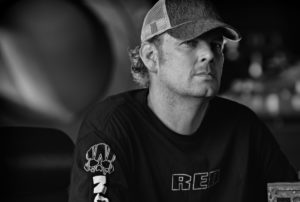

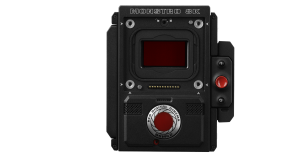
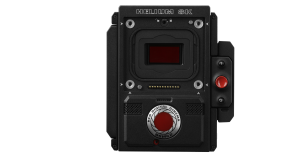
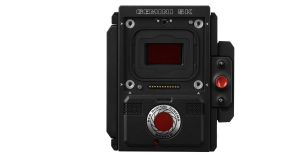
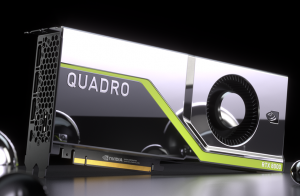








“JON: I see Full Format as the biggest change in our business since movies went from silent to talkies.”
Wut? Bigger than the film to digital transition? Bigger than square to widescreen? Bigger than 720p to 4k? Bigger than surround sound? Bigger than HDR? Bigger than CG Visual Effects? Bigger than the emergence of the summer blockbuster? Bigger than color? Bigger than steadicam? Bigger than miniaturization of cameras to something hand holdable? Bigger than the transition from studios to independent film makers?
Gavin: Yes, all those things you mention are big. But the reason I stick to my statement is that the new paradigm requires new CAMERAS and new LENSES. When we moved from analog to digital, we used the same S35 lenses.
We already changed all of our lenses numerous times since talkies:
The rise of anamorphic, the ubiquity of 16mm independent films in the 60s and 70s, IMAX’s addition to Hollywood films, Cinerama which involved not one but 3 lenses!
Most productions are not using the “Same s35 lenses that we’ve always used”. Every film shot on a Master Prime is using “all new lenses” since the 60s. Most films are shot on relatively modern lenses. And when digital first caught on it was all 2/3rds sensors so no we weren’t using the same lenses during the digital transition either. Not to mention Panavision’s FF lenses are mostly based on their old 70mm lenses, so they’re actually an older heritage than a Master Prime, Leica or Cooke Anamorphic.
Full Frame gives you a little less barrel distortion, a little more sharpness and a little less chromatic aberration. It’s hardly an earth shattering shift. If you’re a director you don’t really have any new tools like you did with Steadicam or hand holdable cameras. If you’re a DP you’re still going to light your film the same. If you’re in G&E you aren’t going to see any change at all, compared to the invention of LED lighting and the miniaturization of lighting elements. Even the camera department won’t necessarily see a difference. You’re still rigging a camera the same and pulling focus. If you’re on the business end of things you won’t see a difference, it’s not like Netflix and streaming services threatening the very business model of theatrical film making. If you’re an exhibitor you don’t see any change, it’s just a DCP file the same as any other. If you’re in VFX you don’t have any change like needing to correct for stereo. If you’re a post house it’s not like you’re having to throw out all of your film, tape or laserdisc equipment it’s just another file.
Fullframe is on average a small incremental improvement in lens quality but the difference between lens manufacturers and camera sensors will be larger than format change. I can’t watch a film in theater and ever hope to confidently state if it was full frame or super 35.